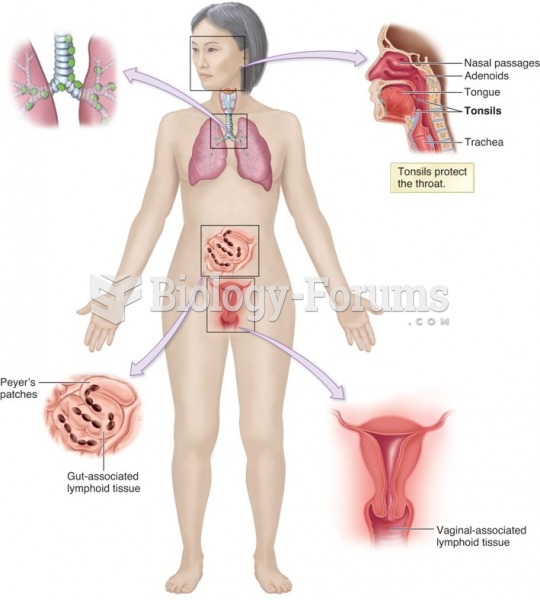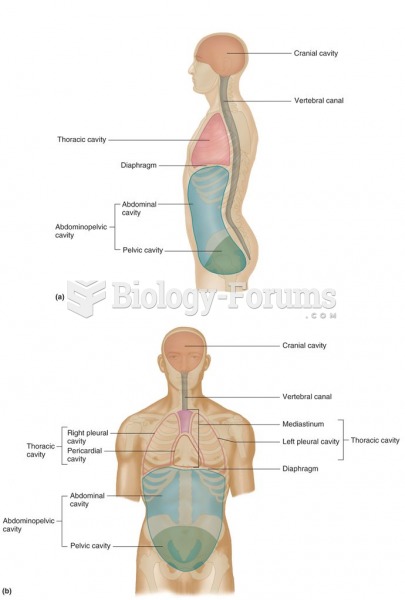|
|
|
An identified risk factor for osteoporosis is the intake of excessive amounts of vitamin A. Dietary intake of approximately double the recommended daily amount of vitamin A, by women, has been shown to reduce bone mineral density and increase the chances for hip fractures compared with women who consumed the recommended daily amount (or less) of vitamin A.
Automated pill dispensing systems have alarms to alert patients when the correct dosing time has arrived. Most systems work with many varieties of medications, so patients who are taking a variety of drugs can still be in control of their dose regimen.
Your heart beats over 36 million times a year.
This year, an estimated 1.4 million Americans will have a new or recurrent heart attack.
Many people have small pouches in their colons that bulge outward through weak spots. Each pouch is called a diverticulum. About 10% of Americans older than age 40 years have diverticulosis, which, when the pouches become infected or inflamed, is called diverticulitis. The main cause of diverticular disease is a low-fiber diet.
 A) Butterfly-shaped lupus rash. Lupus is the Latin word for wolf; the face rash was thought to look ...
A) Butterfly-shaped lupus rash. Lupus is the Latin word for wolf; the face rash was thought to look ...
 Mucosa-associated lymphoid tissue (MALT), including tonsils, adenoids, and gut-associated lymphoid ...
Mucosa-associated lymphoid tissue (MALT), including tonsils, adenoids, and gut-associated lymphoid ...





